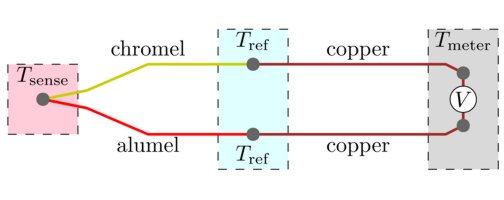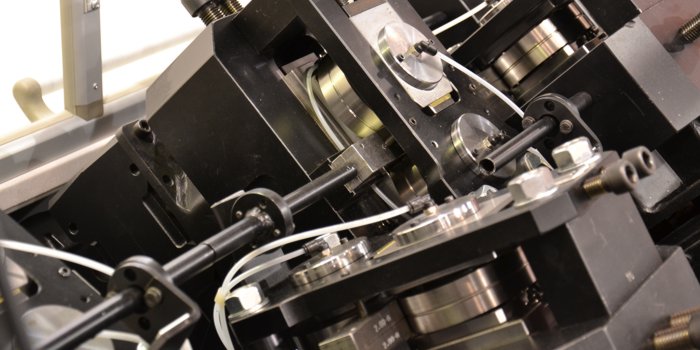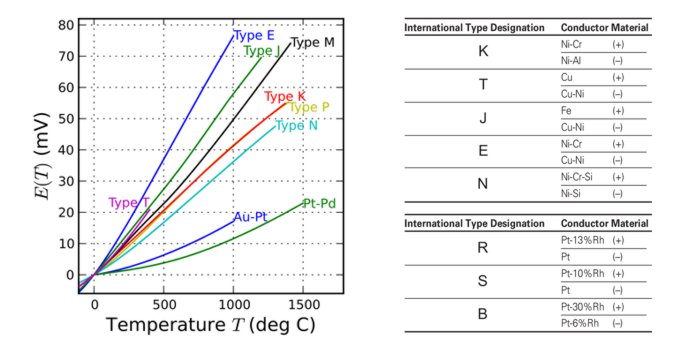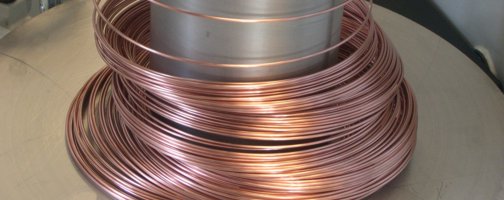Thermocouples are simple yet extremely versatile temperature sensors employed in various industrial applications. Let’s delve into how they work, their primary usages, the different types and temperature ranges, the metals used in thermocouples’ production – with a focus on wire processing and the suitable cold rolling solutions.
Thermocouples: laws and working principles
Thermocouples are sensors that allow for easy and reliable temperature measurement, by harnessing a physical phenomenon that generates an electrical signal proportional to the temperature being measured, without the need for external electrical power.
The operation of thermocouples is based on the Seebeck effect, discovered in 1821: when two different conducting metals are in contact, an electric potential difference is generated, that is proportional to the temperature one between the two junction points.
Specifically, a thermocouple consists of two metallic wires of different materials, soldered together at one end (known as the hot junction), while the other end (the cold junction) is maintained at a known reference temperature. The temperature difference between the junctions then generates a small current flow on the order of microvolts.
This voltage is measured and correlated to the temperature using a voltmeter connected to the thermocouple circuit, providing a precise electromotive force reading.

Where are thermocouples commonly used?
Thermocouples have the advantage of being very convenient, easy to use, reliable even in harsh environments, and they don’t require external electrical power.
Therefore, thanks to their fast response time, versatility and cost-effectiveness, thermocouples are employed in various fields primarily as temperature sensors. Some common applications and uses of thermocouples include:
- Industrial machinery: for temperature control in ovens, blast furnaces, rolling mills, foundries, as well as dryers, heat exchangers, cooking stoves and more;
- Energy and petrochemical: inside boilers, gas turbines and chemical reactor;.
- Automotive and aerospace: in combustion engines, turbines and exhaust systems, but also extensively used in airplanes and aircraft engines;
- Appliances and systems: in household appliances like ovens, dryers, refrigerators and for thermal monitoring in heating and cooling systems;
- Medicine: for measuring body temperature with clinical and diagnostic thermometers;
- Research and development: used in research laboratories, chemistry and biology.

Tipologie di termocoppie e metalli utilizzati
There are different types of thermocouples that differ in the metals used for the conducting wires: their combination determines the suitable characteristics and usages. Thermocouples can be categorized into base metal thermocouples and noble metal ones.
Base metal thermocouples, including types K, J, T, E, and N, are composed of common metals such as nickel, iron and copper. They are the most widely used due to their affordability and versatility in various low to medium-temperature applications. Specifically:
- type K thermocouples, composed of nickel-chromium and nickel-aluminum (-200 to +1200°C);
- type J thermocouples, composed of iron and constantan (a copper-nickel alloy), with a typical temperature range of -210 to +1200°C;
- type T thermocouples, composed of copper and constantan (-270 to +400°C);
- type E thermocouples, composed of nickel-chromium and constantan (-270 to +980°C);
- type N thermocouples, composed of nicrosil (nickel-chromium-silicon) and nisil (nickel-silicon), with a typical temperature range of -270 to +1300°C.
Noble metal thermocouples are made from precious metals suitable for measuring high temperatures (all above 1000°C). They offer greater stability but come at significantly higher costs, which is why they are less commonly used. Notable examples are types S, B, and R, which consist of varying percentages of platinum and rhodium.

Thermocouple manufacturing: INVIMEC wire machines
The industrial manufacturing process of thermocouples consists of several stages, from selecting and preparing the metallic raw materials to testing and certifying the finished products. In short, the mail construction phases are:
- Metals for the conducting wires are selected based on the type of thermocouple (copper and constantan for type T, platinum and rhodium for type S, etc.).
- The metallic wires are processed and reduced in thickness to achieve diameters of 0.25-1 mm, through processes like cold rolling or drawing.
- The ends of the two metallic wires are welded together to form the hot junction. In some thermocouple models, insulating coatings (polymeric, ceramic, etc.) and/or extruded cables with external PVC coatings are applied.
- Electrical connectors are then attached to the ends and testing is conducted.
For thermocouple manufacturers, or companies that produce machinery with integrated thermal sensors, in-house thermocouple components construction allows for greater quality control and potential cost reduction. In this regard, wire rolling mills can be used to produce some of the main components, particularly the metal wire.
The conducting wire is the primary component of the thermocouple, and cold metal rolling is a highly precise and automated process that reduces the wire to the desired cross-section without altering the mechanical and structural properties of the metal.
INVIMEC cold rolling mills for industry are capable of processing both base metals and noble metals, processing the wires used for thermocouples production with high precision and reliability.
